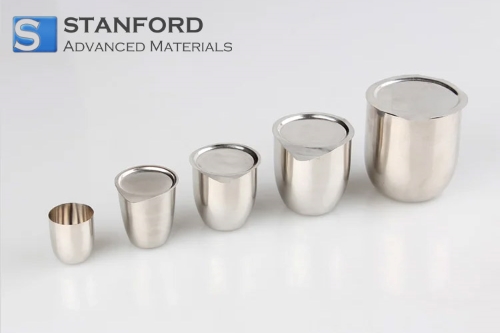Application of Molybdenum & Molybdenum Alloys
Molybdenum and molybdenum alloys have many excellent properties such as good thermal conductivity, electrical conductivity, low thermal expansion coefficient, high-temperature strength, low vapor pressure, and wear resistance, and thus enjoy a wide range of applications in many fields. In this article, let's take a deeper look at the application of molybdenum & molybdenum alloys.

Application of Molybdenum & Molybdenum Alloys
Application of Molybdenum & Molybdenum Alloys in Electronic Power Equipment Manufacturing
Electronic power equipment manufacturing is the main application field of molybdenum and molybdenum alloys. For example, they are used as filament, lighting and electronic tube parts, microwave devices, medical electronic electrical appliances, the internal components of X-ray tubes, X-ray flaw detectors, low thermal expansion materials for integrated circuit components, etc.
Molybdenum (Mo) can also form Cu/ Mo/ Cu (CMC) composites with copper (Cu). Among them, Cu can improve the thermal expansion performance of the composite material, so that it can better match the ceramic matrix.
Application of Molybdenum & Molybdenum Alloys in the Material Processing Industry
1. Used as Thermal Processing Molds
In the aviation and aerospace fields, molybdenum alloys are mainly used to make molds for high-temperature forging engine parts.
2. Used for Molten Metal Processing
Cast aluminum plants use molybdenum to suppress the thermal cracking of their processed materials. That is, TZM (titanium-zirconium-molybdenum) alloy cores and mandrels (rods) are usually used in the parts that are prone to hot cracks in the processed materials, which can avoid the hot cracking of the materials. The use of TZM and MHC alloys can also improve the rapid solidification capability of processing equipment. Tungsten-molybdenum alloy has the same corrosion resistance and can significantly reduce production costs. Therefore, Mo-25% W and Mo-30% W alloys suitable for application in impellers, pump units, and molten zinc pipe systems have been developed.
3. Used for Thermal Spray Treatment
The piston ring can be thermally sprayed with molybdenum. The method is to mix molybdenum powder with a binder containing nickel (Ni) and chromium (Cr) and then spray the mixture on the piston in a plasma manner. The coating can be pure molybdenum or molybdenum alloy mixed powder, which is resistant to wear and corrosion, so it is suitable for paper industry applications.
Moreover, molybdenum powder can also be mixed with different content of nickel, chromium, boron, and silicon powder to form different powder mixtures, but the spray powder requires good fluidity, and the thermal spray powder should generally be spherical or nearly spherical after spraying.
4. Used for Chemical Treatment
The use of molybdenum as electrode material in glass melting processing can also improve the processing capacity of traditional furnaces. Because molybdenum has high-temperature strength and thermal stability, it is suitable for high-temperature furnace components.
For example, molybdenum and molybdenum alloys are mostly used as materials for hot isostatic pressing (HIP) devices, heating elements, sleeves, and brackets; molybdenum fixtures and sintered molybdenum boats are commonly used in ceramics; almost all oxide ceramic products produced in the electronics industry are fired with molybdenum carriers.
In addition, thanks to the compatibility of molybdenum with hot gases and its high-temperature strength, it can also be used in the aerospace and defense industries. However, the poor oxidation resistance of molybdenum restricts its application.
Conclusion
Thank you for reading our article and we hope it can help you to have a better understanding of the application of molybdenum & molybdenum alloys. If you want to learn more about molybdenum & molybdenum alloys, we would like to advise you to visit Stanford Advanced Materials (SAM) for more information.




